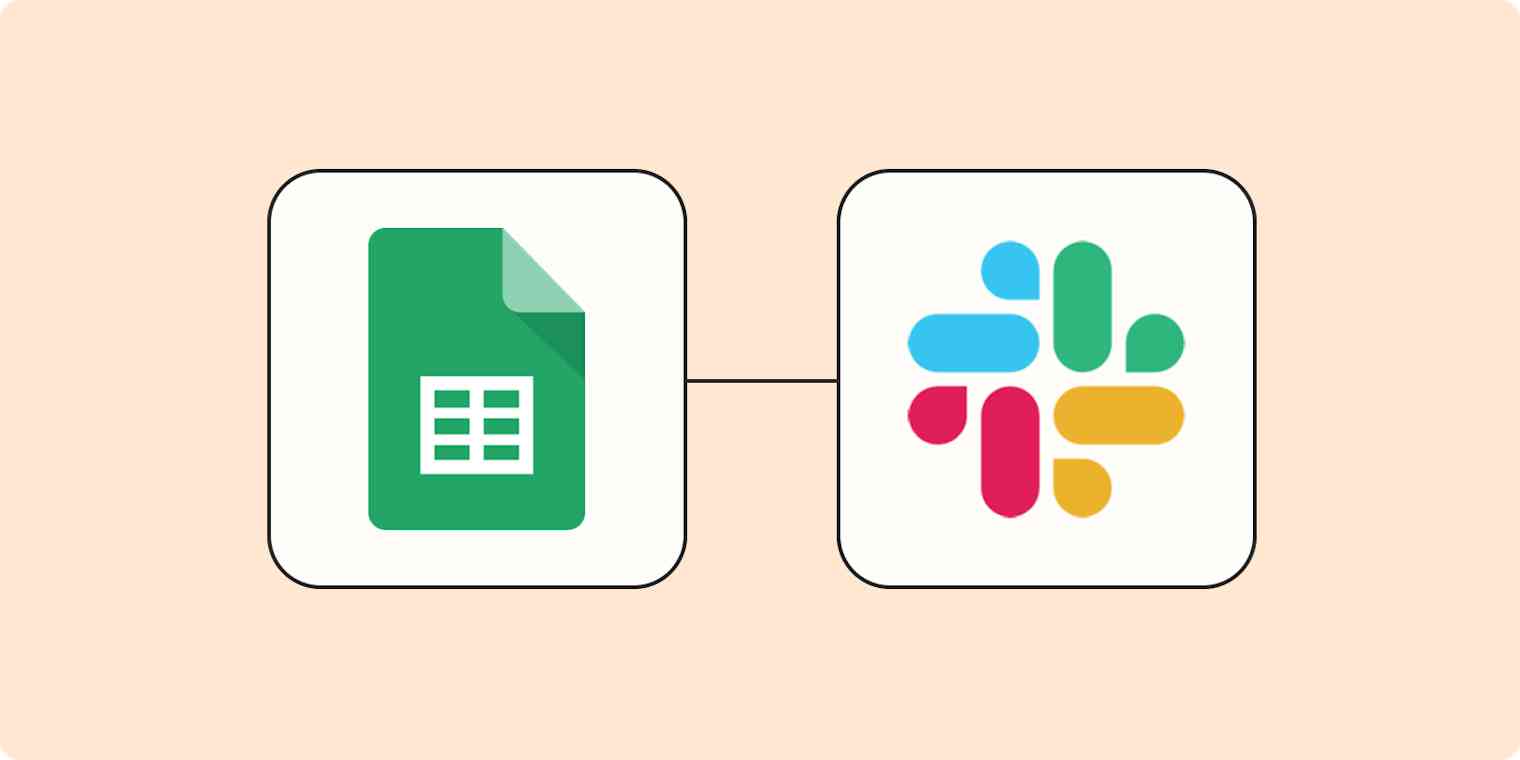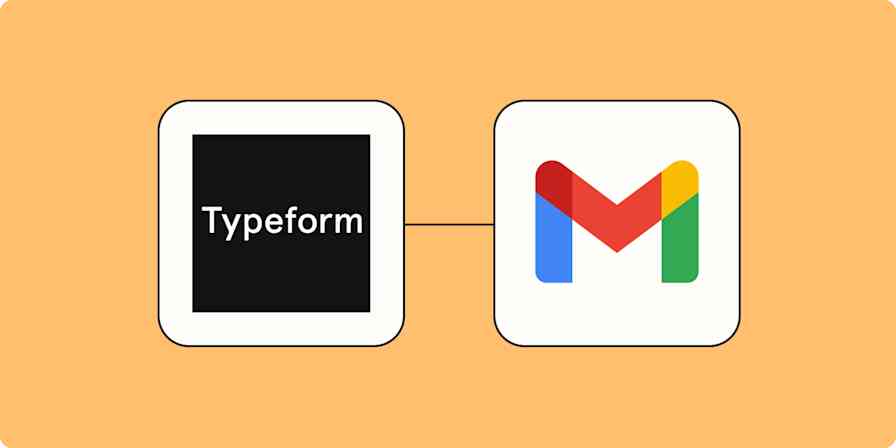Whether you love spreadsheets or hate them, you've probably used Google Sheets to crunch numbers, track data, or keep a log of new leads. (Or, in my case, to highlight new books I'm interested in reading.)
But storing all that business-critical information in one place isn't enough. You might want an easy way of knowing when your sheet is updated (like when new leads come through or new data is available). Or you might want to let your team know whenever there's new activity so they can act right away if it's time-sensitive.
Instead of manually checking Google Sheets every day for new information, create a Zap—our word for the automated workflows you create with Zapier—that will automatically notify you (or your team) in Slack whenever a new row is added to Google Sheets. You'll spend less time checking Google Sheets and more time focusing on what matters.
Option 1: Get started quickly with a Zap template
Want Zapier to do the heavy lifting? We have a template to help you get started quickly. Click the button below and you'll be ready to create your Zap. Some fields will be pre-selected to make things easier. Note: You'll need to create a Zapier account if you don't already have one.
Here's how it works:
Click on the Zap template.
Connect your Google Sheets account and confirm which spreadsheet and which worksheet you want Zapier to watch.
Connect your Slack account and select the Slack channel you want your message to be sent to.
Select the Slack fields you want to edit, set up the message, and tell Zapier how you want it to handle your message.
Test your workflow and turn it on.
Option 2: Create your own Zap
If you'd like more control over information in your Zap or would like to add additional actions such as filters, you can click here to create a new Zap from scratch in the Zap editor.
Set up your Google Sheets trigger
Once you're in the Zap editor, you'll first need to create the trigger, which is the event that will kick off your Zap. Search for and select Google Sheets as the trigger app. Select New Spreadsheet Row as the trigger event. Click Continue.
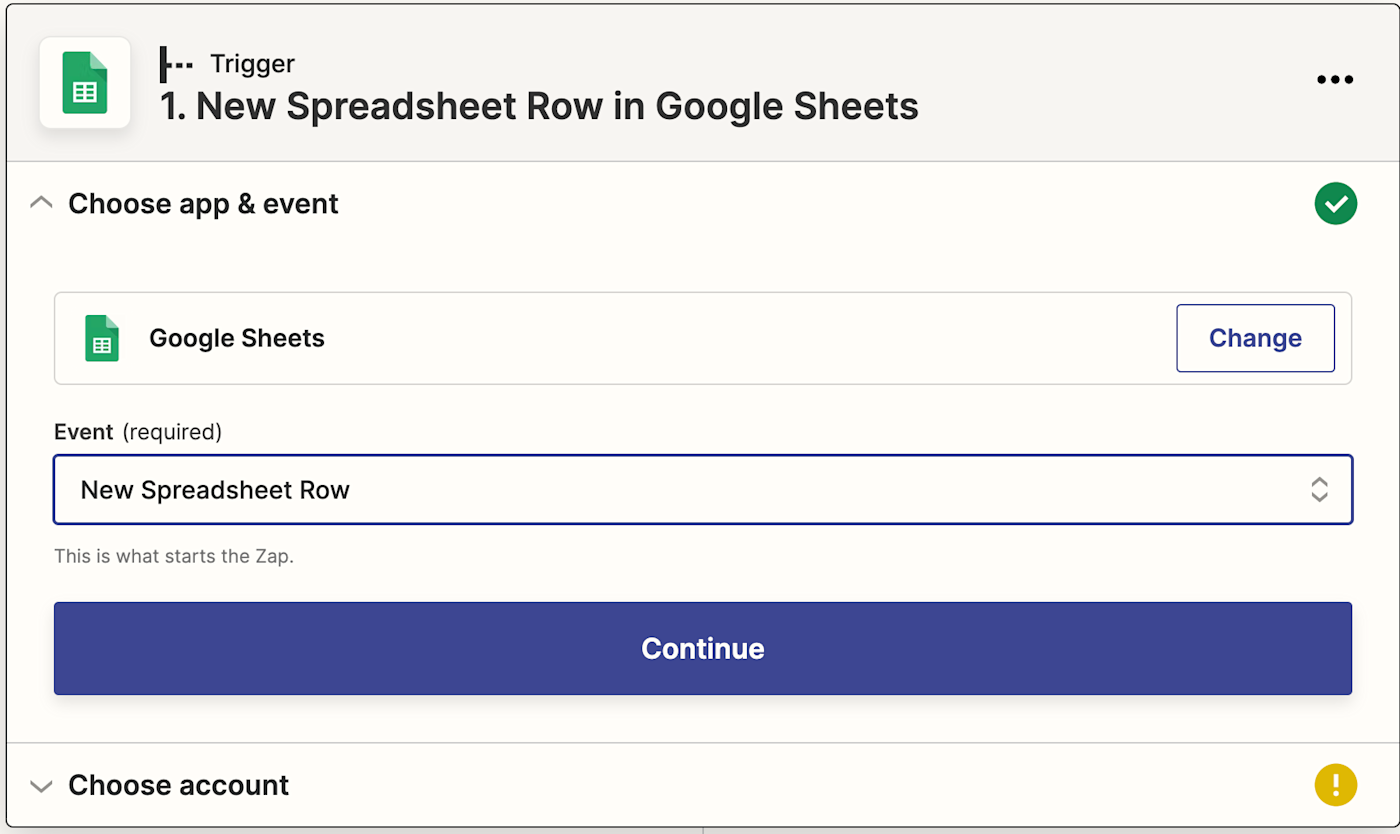
Next, connect your Google Sheets account to Zapier by clicking on the dropdown menu and selecting +Connect a new account. You'll need to give Zapier permission to access your Google Sheets account. Click Continue.
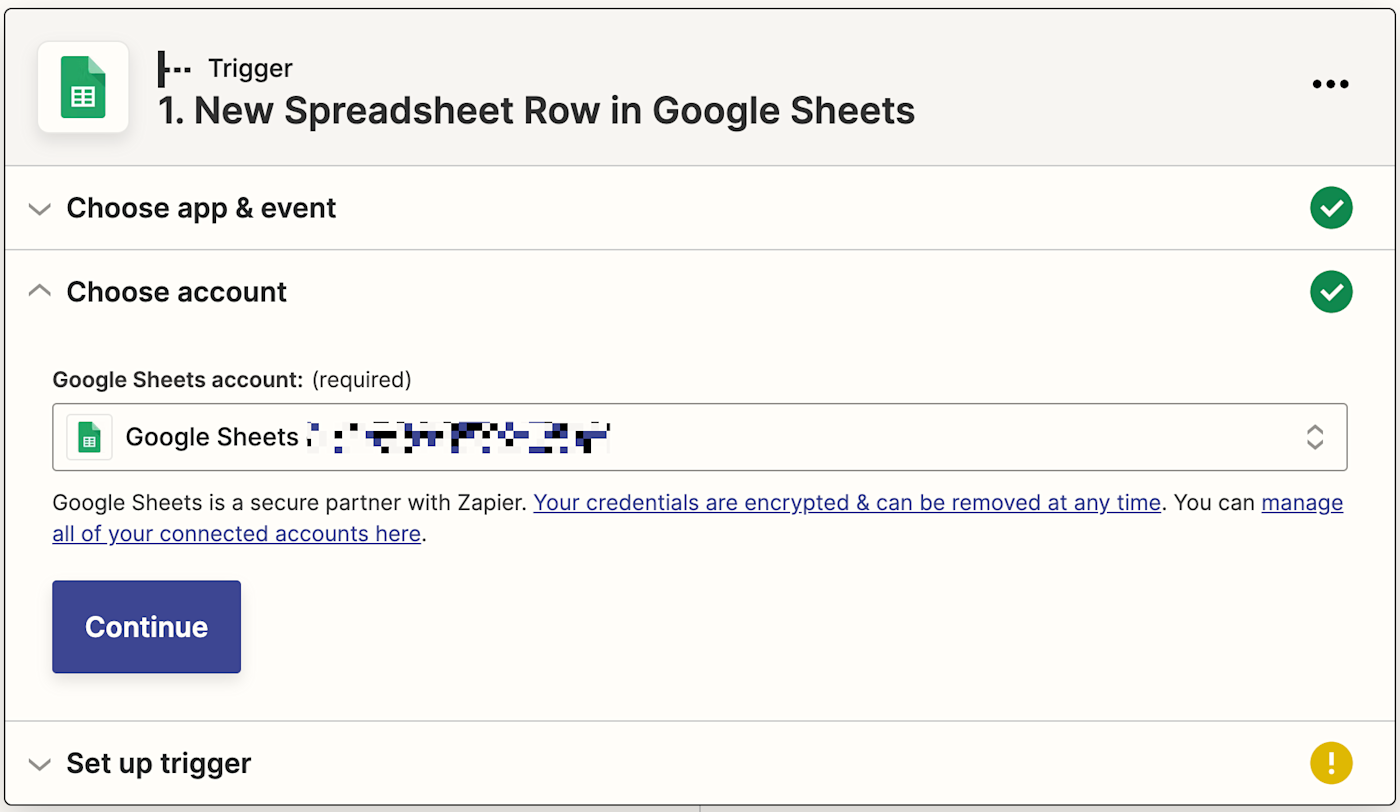
Next, it's time to set up the trigger. In the Spreadsheet field, select the Google sheet you want Zapier to monitor for newly added rows. Under the Worksheet field, select the specific worksheet where you want to get notified about new rows. Click Continue.
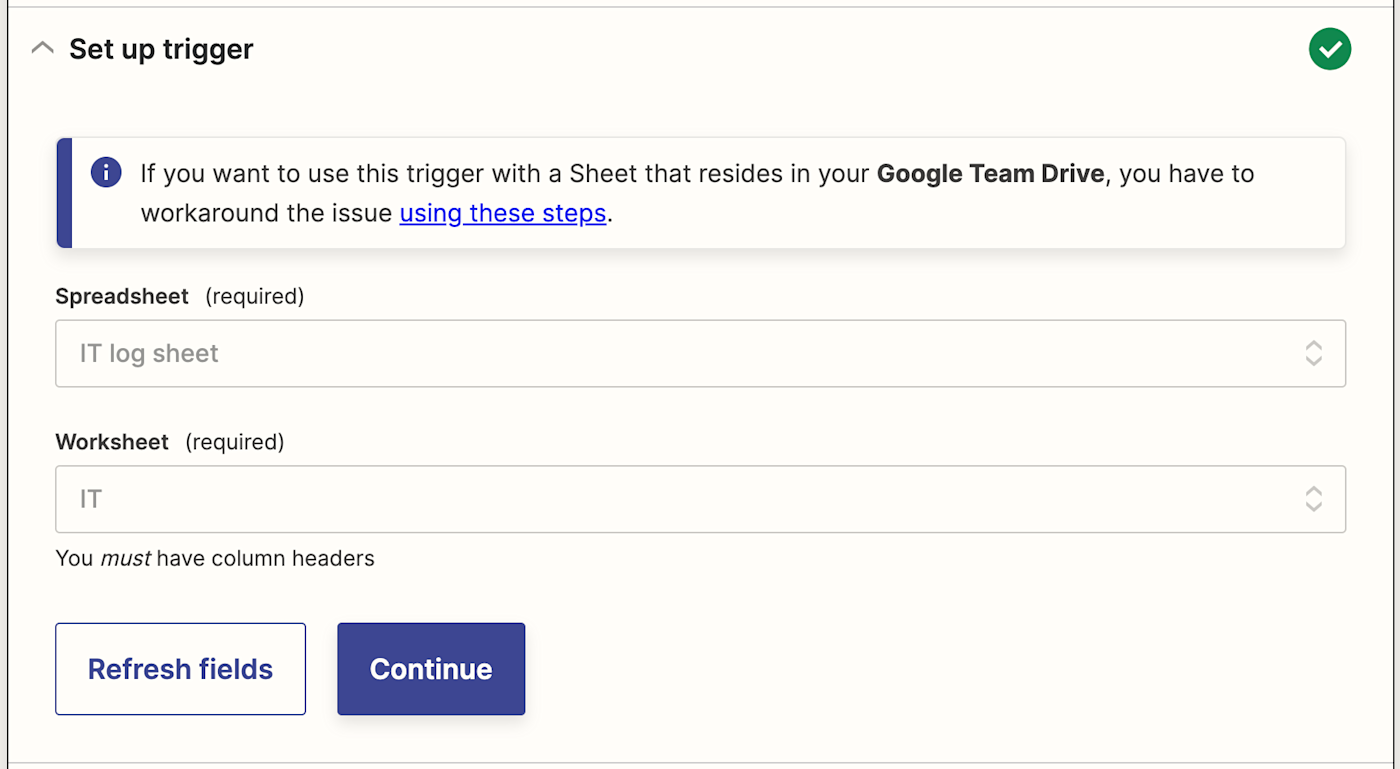
Next, click Test Trigger so Zapier will pull the most recently created row in your Google Sheets account. Click Continue.
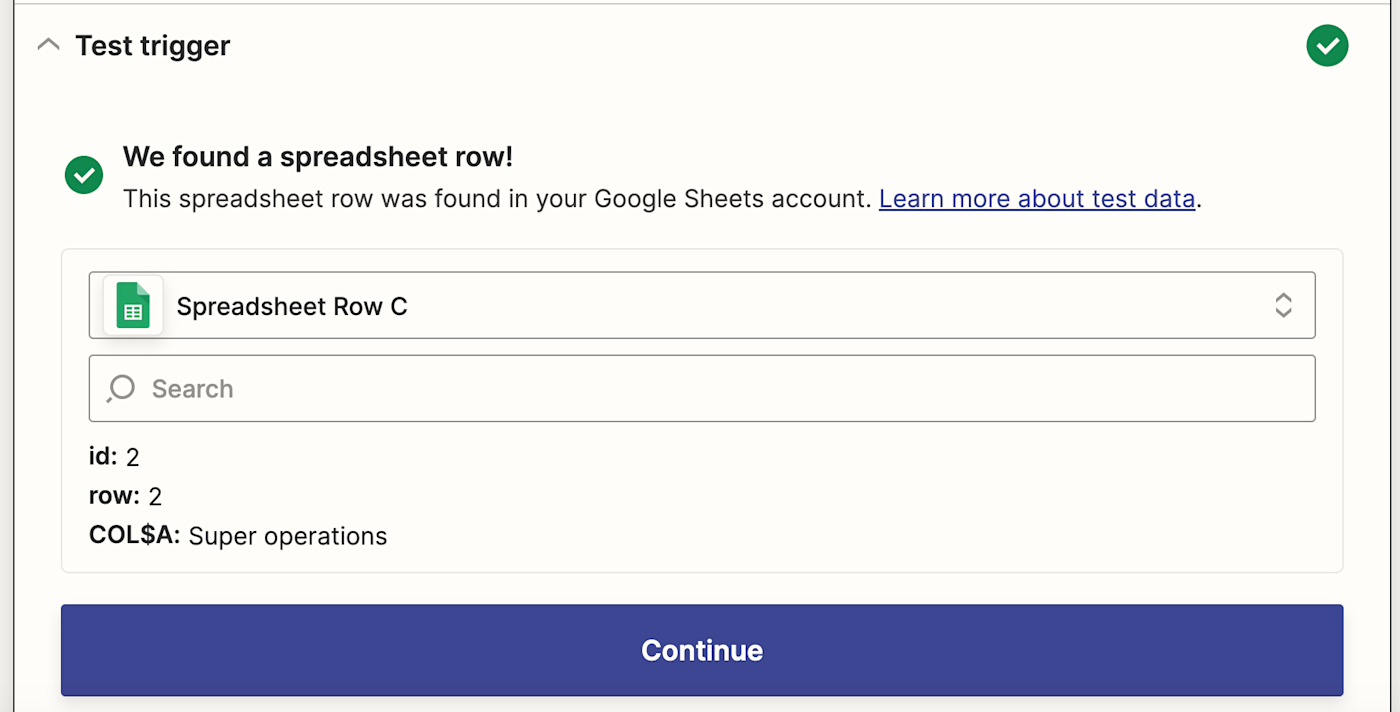
Set up your Slack action
In this next step, you'll set up the action—the event your Zap will perform once it's triggered. Search for and select Slack as your action app, select Send Channel Message as the action event, and click Continue.
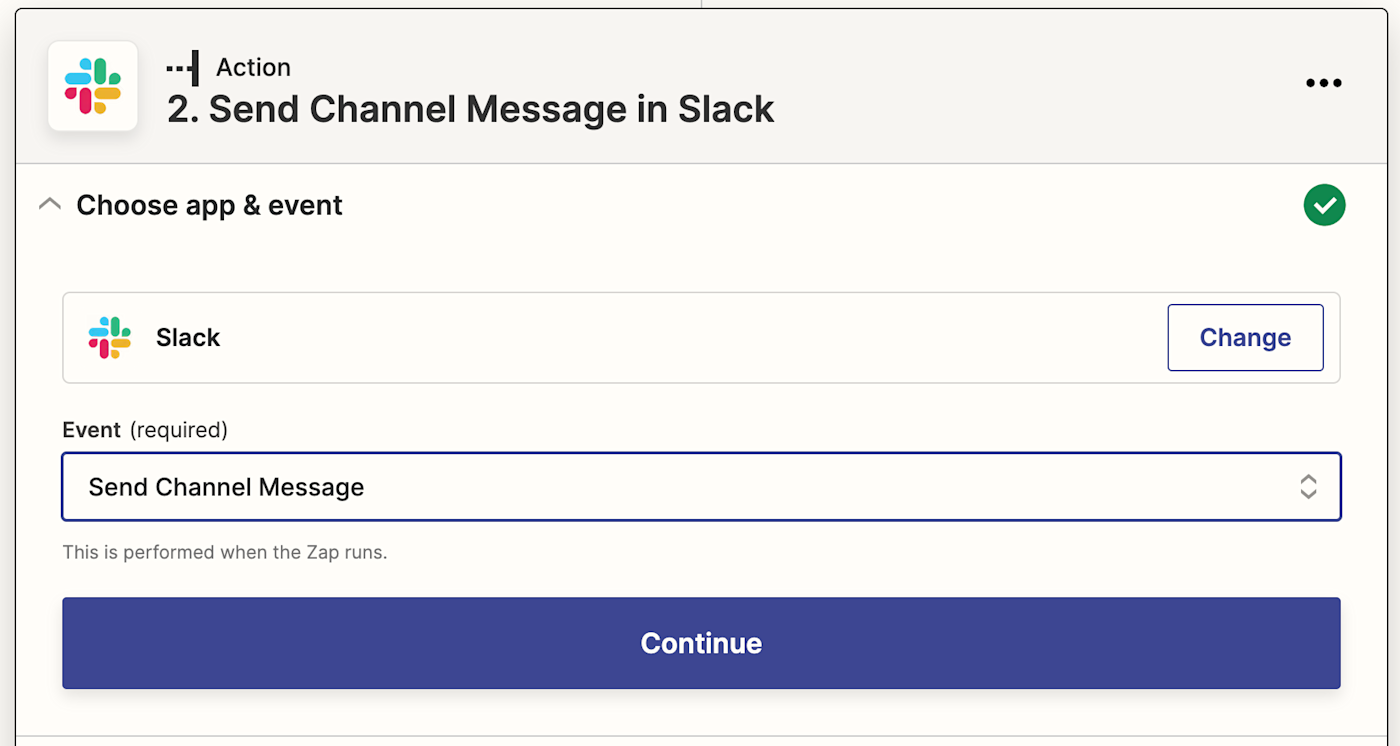
Next, connect your Slack account to Zapier by clicking on the dropdown menu and selecting +Connect a new account. You'll need to give Zapier permission to access your Slack account. (Note: You may have to first log in to Slack if you're not already logged in.) Once you've connected your account, click Continue.
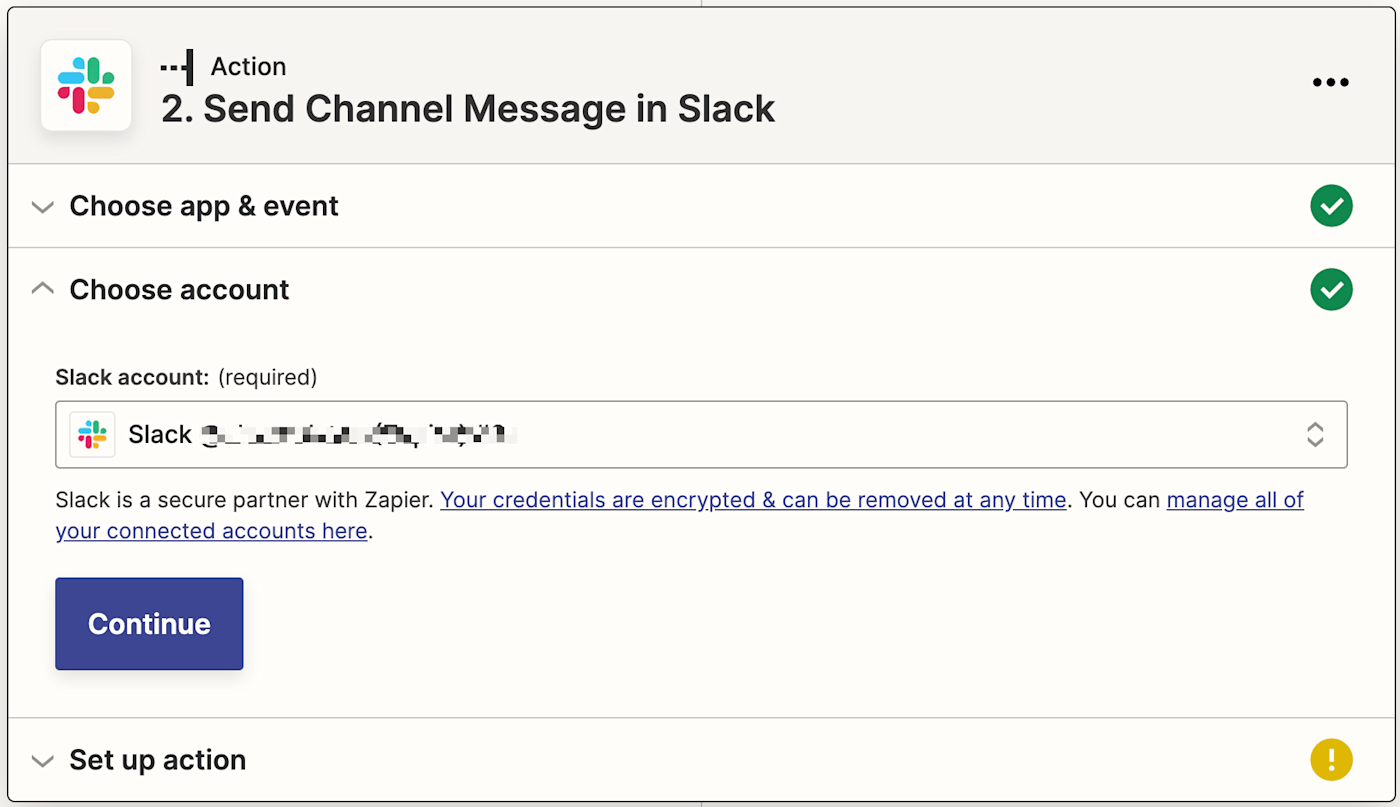
Customize your Slack message
Now you need to tell your Zap where to send the Slack message. Choose a Slack channel from the dropdown. This will be where you'll get notified automatically whenever a row is updated in Google Sheets.
Next, type out the message that you'd like to send. You can add data from previous steps in your Zap by clicking inside any empty field where you want the data to go (such as inside the Message Text field) and selecting an option—or multiple options—from the Insert Data dropdown menu.
In this instance, we'll pull in the text specified inside the row and link off to the Google Sheets so anyone can access it quickly for more information. If you're unsure how to format your message properly, check out our Slack formatting guidelines.

After you finish customizing your message text, you'll have further options to set up your message. For example, if you want the message to be sent from a bot instead of your Slack handle, make sure you select Yes under Send As A Bot? You can also give your bot a name, use a Slack emoji as the bot's icon, and include a link to the Zap itself.
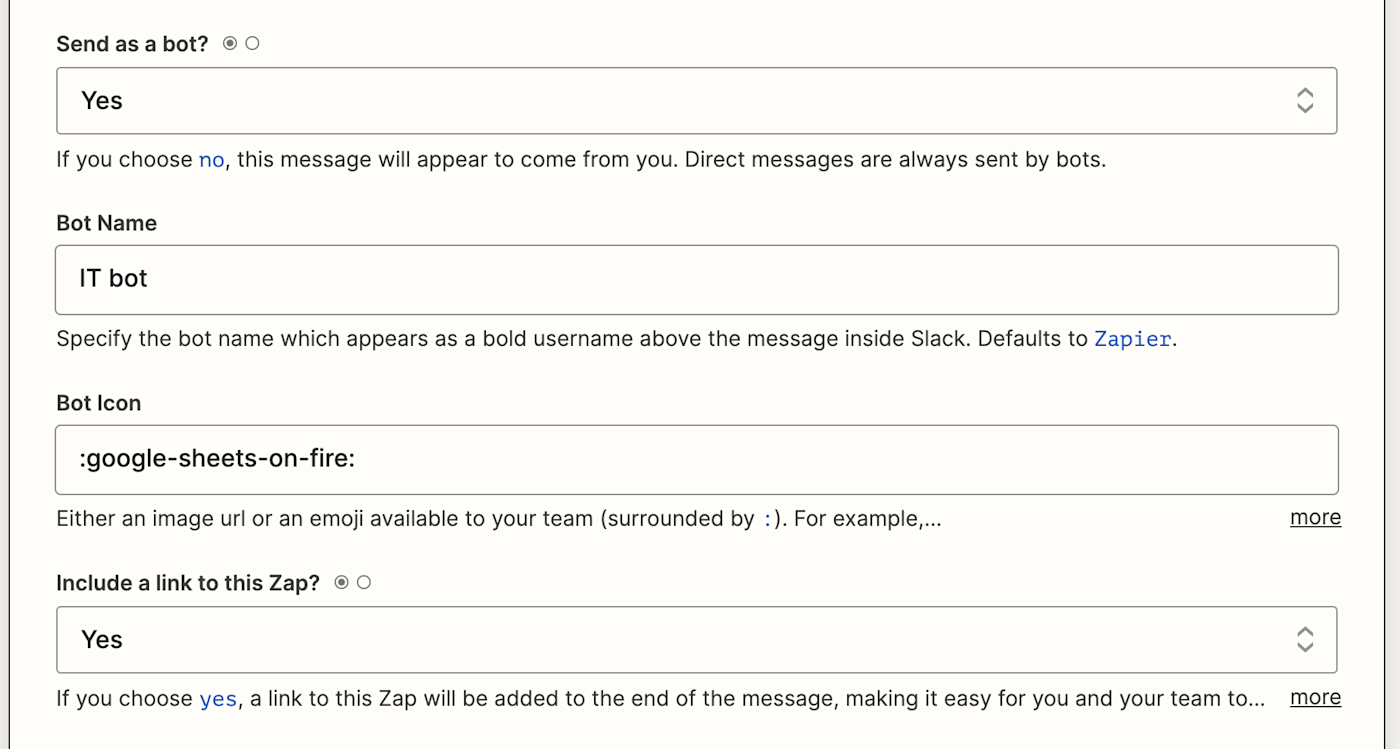
You can also attach an image by URL, auto-expand links as images or documents, or add a file. If you want to notify someone specific in the channel, you can link to their Slack username so they'll be tagged in the message.
Once you've finished setting up the Slack notification, click Continue.
Test your Zap and turn it on
Next, you'll need to test your Zap. Zapier will show you a preview of the Slack channel message before it's sent. Click Test & Continue.
Zapier will now send a test message to the Slack channel you selected with the message you've just set up.
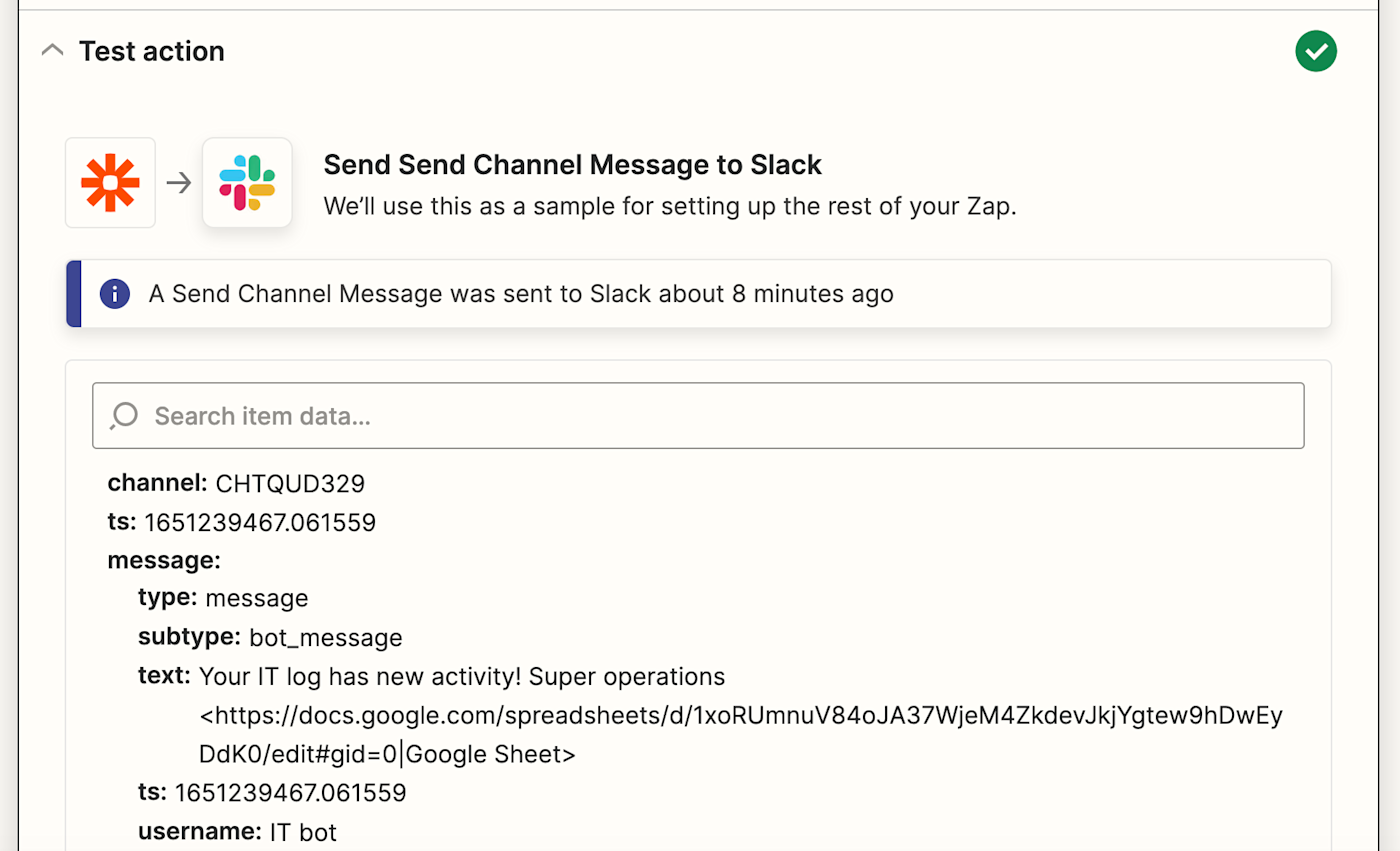
If you're happy with how the message looks in Slack, you're ready to begin using your Zap! It will automatically send a Slack channel message every time a row is added in Google Sheets. You can now act on important updates as soon as they come through.
Send a Slack message whenever Google Sheets rows are updated
Now you know how to get notified every time a new row gets added to your Google Sheet. But what about the rows that already exist but are updated by someone? It might be just as important to you to get a Slack notification for those changes too.
Fortunately, you can also create a Zap that triggers whenever a row in your Google Sheet is updated. If you want to get started quickly, we have a template you can use:
Send Slack messages whenever Google Sheets rows are updated
Otherwise, if you want more control over the information inside your Zap, you can start from scratch here. Once you're in the Zap editor, you'll first need to create the trigger. (That will be the only step that changes from the above workflow.)
Search for and select Google Sheets as the trigger app. Select New or Updated Spreadsheet Row as the trigger event.
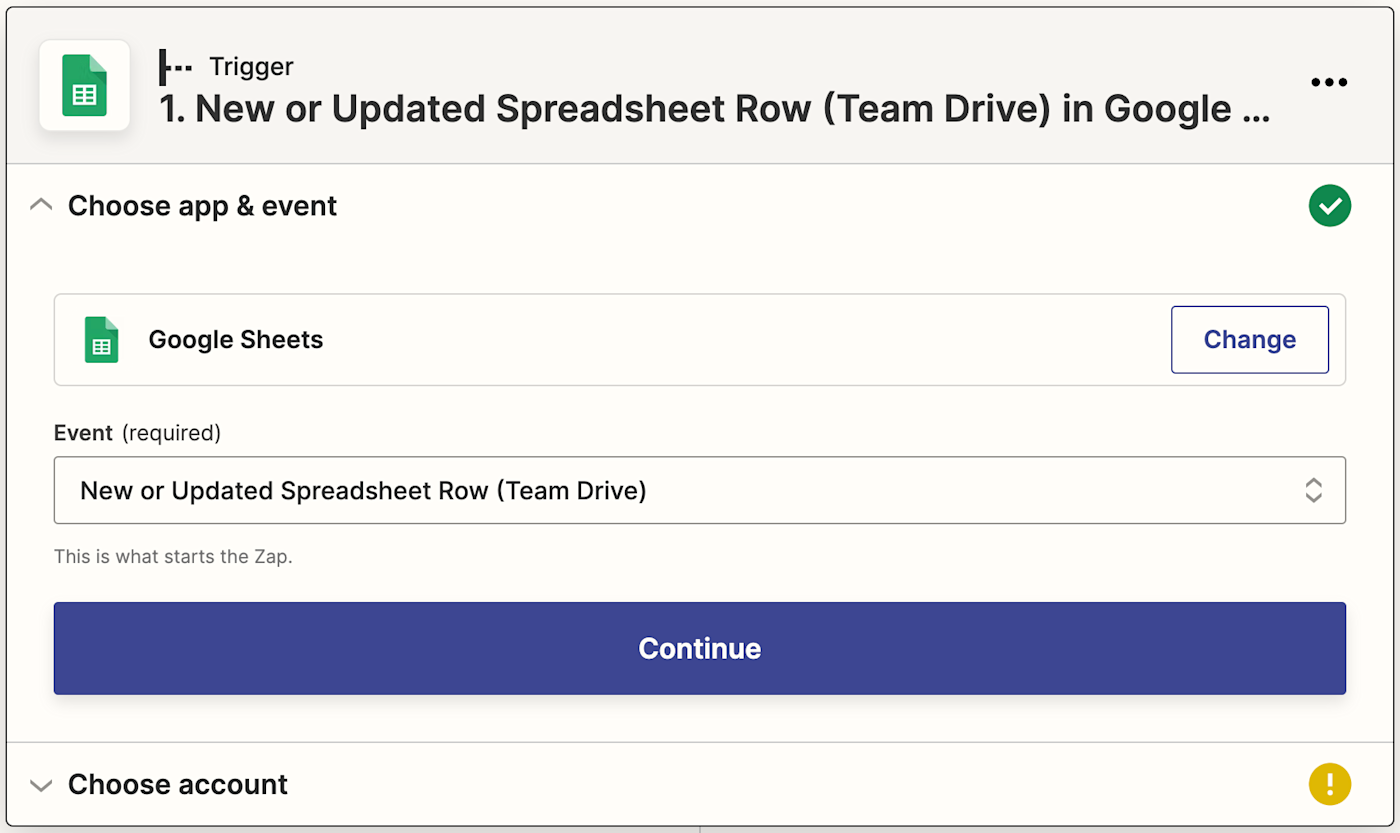
From there, all the rest of the steps will remain the same as the workflow we outlined in detail above. Now you can keep your team in the loop every time new or updated info is added to your important Google Sheets.
